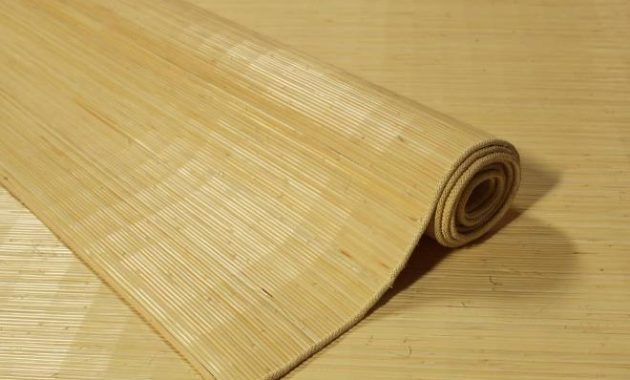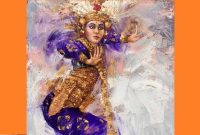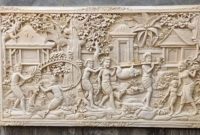Now there are many kinds of modern products that are used to replace old or traditional products. However, traditional goods still receive attention because of their unique value and charm, which still attracts observers. One of them is the traditional mat, which has a natural function as a mat on the floor or as a place to sleep, for various activities.
The traditional mat is one of the simplest forms of human invention but will remain useful forever because of its basic function. Traditional mats are usually made of woven leaves or woven from plant fibers, or other natural materials. The surface texture tends to be hard because it is influenced by the basic ingredients it is made of, unlike carpet, for example, which is smoother. The motifs it produces are also diverse and distinctive, forming distinctive patterns that vary in each region.
In Indonesia, there are many centers for the manufacture of traditional mats. Made from various natural materials, mats are still able to survive in the market because their basic function is as a mat that will always be needed anytime and anywhere. Other countries in Asia also have handicrafts in the form of traditional mats, each of which displays the characteristics of its country, so that you can easily identify where it came from.
To get to know more about traditional woven mats from various regions, the following will provide complete information on the variety:
Contents
1. Samak Mat
This is a type of traditional West Javanese mat, located on the island of Java, Indonesia. The basic material for its manufacture is woven dry straw leaves. The amount of dry straw leaves needed depends on the size of the mat you want to make, it could be hundreds to thousands. The traditional values that are owned are quite strong even though now they have to compete with modern carpets which are more economical in price.
2. Korai Paai
This is a traditional Indian sitting mat, its appearance is also similar to a tan mat, but the origin of this mat is traditional Indian, to be precise from the Tamil Nadu region in South India. The basic material or main raw material of the traditional Korai Paai mat is made from a type of plant called Cyperus pangorei. The nature of this plant material has a flexible and smooth texture, so it is very comfortable when used as a mat to sit on. As a touch of art to make it more attractive, the plant fibers are dyed with various natural dyes to make them look prettier, some red, yellow, green, purple and others. The price of korai paai has a high selling value, this is because the manufacturing process is quite long.
3. Tatami
Tatami is a traditional Japanese mat made of straw. However, unlike tanned mats, tatami is not made by plaiting, but by weaving. After that, the edges are given a kind of cloth for the cover, so that the final appearance is neater and prettier. It is said that in the past, this mat was a luxury item that not all Japanese people had, only among wealthy people, and often became a symbol of the social status of the people, although gradually it was used by many people. Now tatami is still used and often becomes a typical souvenir from Japan because it is very unique and interesting.
4. Rattan Lampit

lakurra.blogspot.com
Rattan mats are typical Indonesian products, especially in Kalimantan and are still in high demand. This traditional rattan lampit is made of braided rattan sticks which are made manually by hand. The advantage of this rattan mat is its ability to adapt to the air, when the air is cold, sitting on a rattan mat will make the body warm, and vice versa, if the air is hot, sitting on this rattan mat will make you feel cool. The selling price of this rattan lamp is quite high, considering the level of complexity in making it.
5. Bamboo Mat
This bamboo mat one of the characteristics of the Chinese state, found in many Buddhist temples and in traditional residential houses in China. The basic material for making it is from Bamboo where China is known for growing this plant a lot, so it is nicknamed the country of the bamboo curtain. The bamboo is then neatly tied into a single unit which can be made for various purposes, one of which is to make a bamboo mat. The color is deliberately left natural so that the natural taste is maintained, and the color can change over time to become brown.



